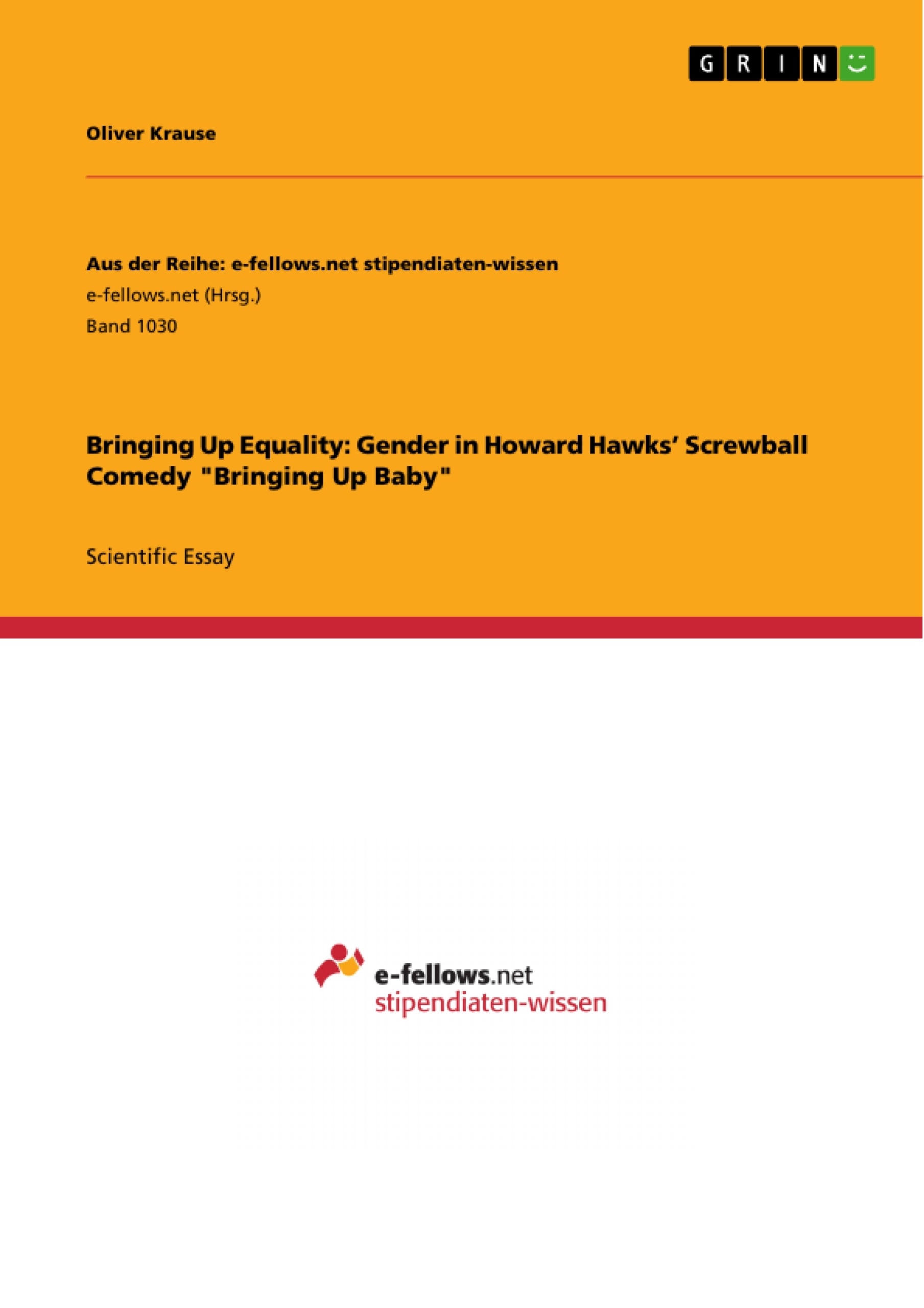The arts, especially films, have always functioned as mirrors of current conditions in society. Gerald Mast states that the reflection of social reality is the primary intention of commercial motion pictures (203). Film comedies, in particular, are able to deal with these conditions in an iconoclastic manner and can question or even expose “the shams of society,” because they use “the entertaining comic form” (21). After the imposition of the Production Code on American film productions in 1934, it appears the conservative values of gender, love and family become more consolidated in films. According to Jane Greene, the outcome of this suppression of, for example, explicit sexuality led to an all new genre - the “screwball comedy” (45). The iconoclastic quality of comedies during that time, hence, relied on a “unique aesthetic for destroying Hollywood assumptions while appearing to subscribe to them” (Mast 250). In particular, the screwball comedy Bringing Up Baby (Howard Hawks, 1938) breaks the classical gender roles and undermines male supremacy in the Hollywood conventions long before the second wave feminist movement of the 1960s. In particular, the female lead’s “screwball” actions can be read as a performance in sharp contrast to the Victorian role model of women. In the following analysis of specific scenes, the film’s use of the cinematic techniques of mise-en-scene, cinematography, and its opposing main characters in order to construct an equal gender image will be examined, drawing mainly on readings by scholars such as Gerald Mast, S.I. Salamensky, and Stanley Cavell.
Inhaltsverzeichnis (Table of Contents)
- Bringing Up Equality
- Screwball Comedy and Gender Roles
- Susan Vance: A Screwball Character
- The Destruction of Materialistic Values
- Doubleness and Equality
- Comedy of Equality
Zielsetzung und Themenschwerpunkte (Objectives and Key Themes)
This analysis aims to examine the portrayal of gender in Howard Hawks' screwball comedy Bringing Up Baby (1938). It will explore how the film subverts traditional gender roles and presents a more equal representation of men and women through the actions and interactions of its main characters, David Huxley and Susan Vance.
- Subversion of Traditional Gender Roles
- The Use of Cinematic Techniques to Depict Gender Equality
- The Role of Materialism in Defining Masculinity
- The Concept of "Doubleness" and its Implications for Gender Representation
- The "Comedy of Equality" as a Framework for Understanding the Film's Gender Dynamics
Zusammenfassung der Kapitel (Chapter Summaries)
- Bringing Up Equality: This introductory chapter sets the context for the analysis by discussing the historical and cultural significance of screwball comedy, particularly during the Great Depression. It introduces the key concepts of gender, equality, and the subversion of traditional gender roles in Hollywood films.
- Screwball Comedy and Gender Roles: This chapter examines the emergence of screwball comedy as a subgenre of sophisticated comedies and its role in providing comedic relief during a time of economic hardship. It highlights the iconoclastic nature of screwball comedies and their ability to challenge societal norms, particularly in regards to gender.
- Susan Vance: A Screwball Character: This chapter analyzes the character of Susan Vance, the female lead in Bringing Up Baby, as a departure from the stereotypical Victorian role model of women. It explores how Susan's actions and behavior challenge traditional expectations of femininity and contribute to the film's subversion of gender roles.
- The Destruction of Materialistic Values: This chapter examines the film's motif of the destruction of David Huxley's possessions as a symbol of the dismantling of traditional masculine values. It argues that this destruction represents a freeing of David from the constraints of materialism and allows him to embrace a more fulfilling and less rigid identity.
- Doubleness and Equality: This chapter explores the concept of "doubleness" in Bringing Up Baby, arguing that it contributes to the film's depiction of gender as fluid and equal. It analyzes scenes where David and Susan's actions and roles are reversed, blurring the lines between traditional masculine and feminine attributes.
Schlüsselwörter (Keywords)
The key words and focus topics of this analysis include screwball comedy, gender roles, equality, subversion, cinematic techniques, materialism, "doubleness," "Comedy of Equality," Bringing Up Baby, Katharine Hepburn, Cary Grant, Howard Hawks, and the Production Code.
- Citar trabajo
- Oliver Krause (Autor), 2013, Bringing Up Equality: Gender in Howard Hawks’ Screwball Comedy "Bringing Up Baby", Múnich, GRIN Verlag, https://www.grin.com/document/283509



